Tech Report
How to upgrade your high speed disperser
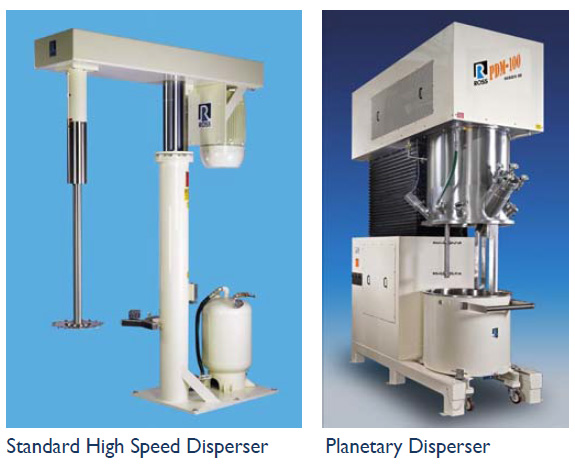
Technology Brief
Increased demand, product improvements, change in raw material supplier, custom orders and many other situations can cause mixing processes to out grow the original equipment. This bulletin offers some insights into the operation of high speed dispersers and how to address specific areas of improvement using alternative mixing solutions.
Mixing with a high speed disperser
The saw-tooth disperser is a standard workhorse used in the manufacture of chemicals, plastics, composites, inks, paints, adhesives and many other products. An economical and relatively simple piece of mixing equipment, its primary purpose is to incorporate powders into liquid and break down particle agglomerates to produce a fine stable dispersion.
Running at tip speeds of around 5,000 ft/min, the open disc blade of the high speed disperser is designed to create vigorous turbulent flow within a low viscosity batch. It generates a characteristic vortex into which dry ingredient scan be added for quick wet-out. As the batch thickens or increases in volume, the blade speed may be adjusted to maintain the vortex and rate of material turnover. Most models allow the disperser to be raised and lowered during mixing to eliminate "stratification" or possible layering within the batch. At the end of the mix cycle, the level of dispersion in the finished product may be measured using a fineness of grind gauge, particle size analyzer or microscope.
Processing challenges
On its own, the disperser blade produces acceptable flow patterns for products up to around 50,000 centipoise (cP). Beyond this range, if more solids are added or viscosity continues to climb, product turnover will start to slow down and eventually, batch material around the periphery can become stagnant.
This becomes a serious concern not only in the sense of poor homogeneity but also because of the risk of product degradation due to overheating in areas around high speed blade. Another limiting factor to the high speed disperser`s performance is shear input. If running the disperser blade at the maximum speed yields an equilibrium particle size distribution that is larger than desired, the material is usually transferred to a higher energy but low throughput device such as a media mill or three roll mill.
Some recommended mixer upgrades
- Level of dispersion always falling short? Switch to a rotor/stator mixer. If your final average particle size is over the target even after sufficient mixing in a high speed disperser, consider switching to a rotor/stator mixer. Conventional designs consist of a four-blade rotor running at tip speeds in the range of 3,000-4,000 ft/min within a close tolerance fixed stator. This type of device imparts mechanical and hydraulic shear by continuously drawing product components into the rotor and expelling them radially through openings in the stator. More aggressive ultra-high shear designs are also available with standard tip speeds anywhere from 5,000 ft/min to over 11,000 ft/min.
- Shorten your cycle time with a powder injection system. If a batch normally requires several hours to complete, consider replacing or supplementing your high speed disperser with a rotor/stator mixer equipped for sub-surface powder injection.Benefits include faster solids dispersion, reduced dusting in the mixing area and simplified material handling.
- Experiencing poor product flow? Upgrade to a multi-shaft mixer. In a multi-shaft mixer, the high speed disperser is complimented by an anchor agitator that helps promote bulk flow and uniform batch temperature. The simple addition of an anchor extends the high speed disperser`s viscosity range to several hundred thousand centipoise.
- Need a more robust machine? Invest in a planetary disperser. For viscosity peaks reaching 500,000 cP or higher, a planetary-style disperser will perform better than a multi-shaft mixer. The disperser blade, along with a planetary stirrer, orbits around the vessel while rotating on its axis. Both agitators continually advance into the batch and contact fresh product all the time regardless of product rheology.
Ross Mixers for advanced dispersion requirements:
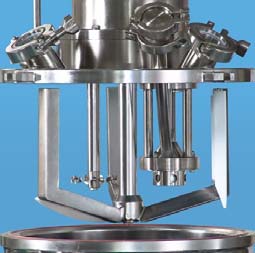
Multi-Shaft Mixers
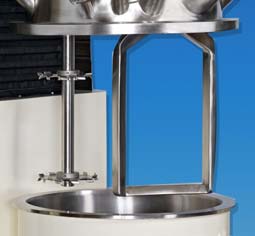
Planetary Dispersers

High Shear Mixers with Solids/Liquid InjectionManifold (SLIM) Technology
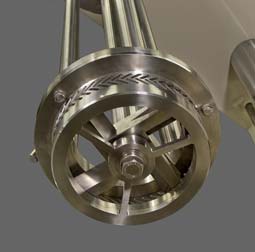
Ultra-High Shear Mixers
Sample Application: Structural Adhesives
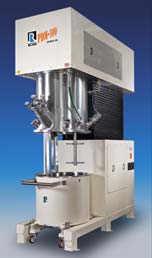
A Ross PowerMix Planetary Disperser with Discharge System is installed at a facility manufacturing various engineering adhesives. It replaced a high speed disperser operation that produced inconsistent results from batch to batch. The current mixing process not only eliminated this issue but also improved throughput.